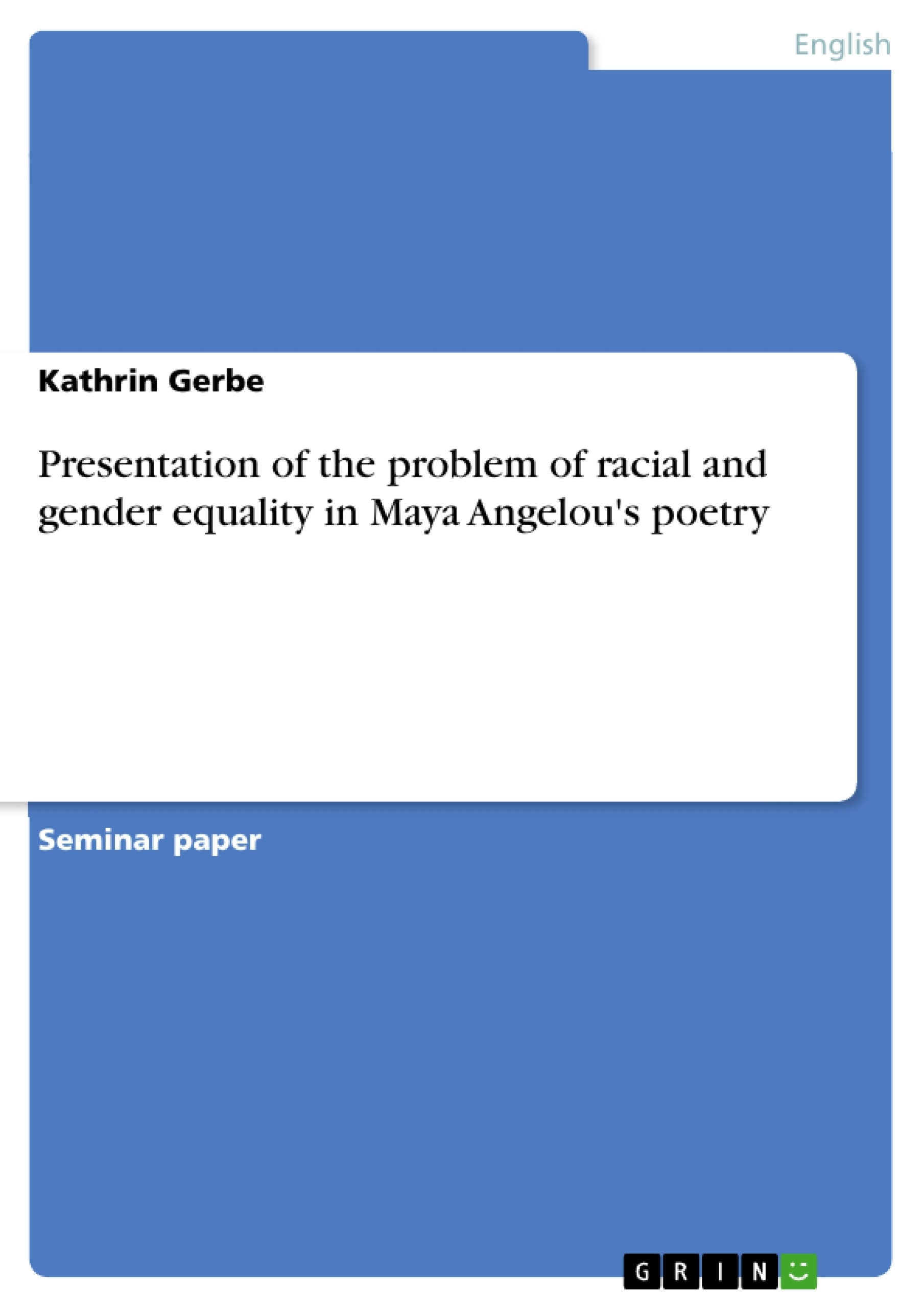Maya Angelou is an African-American writer. Her people and their position in American society play an important part in her works. Much of her writing is based on personal experience, therefore her central topics are racism and the emancipation of black women in the USA.
This term paper analyses her poems "Equality" and "Caged bird", discussing the issues of racism and female emancipation in the context of the Civil Rights Movement of the 1960s.
Table of Contents
- Introduction
- Background information on Maya Angelou
- Social and political context of the Civil Rights Movement
- The problem of racial and gender equality in Maya Angelou's poetry
- Integration of the topic "Race" into Angelou's work
- Presentation of the topic "equality" in Angelou's poetry
- Analysis of "Equality"
- Analysis of "Caged bird"
- Conclusion
Objectives and Key Themes
This term paper examines the presentation of racial and gender equality in Maya Angelou's poetry. It explores how her personal experiences as an African-American woman during the Civil Rights Movement shape her writing and how she utilizes her poetic voice to address the societal injustices she witnessed.
- The impact of racial and gender discrimination on Angelou's life and art
- The role of poetry as a tool for social change and empowerment
- The complexities of racial equality in the United States during the Civil Rights Movement
- The intersection of race and gender in Angelou's poetry
- The significance of African-American cultural heritage in Angelou's work
Chapter Summaries
The introduction provides background information on Maya Angelou's life and the historical context of the Civil Rights Movement. This chapter contextualizes Angelou's work by outlining the social and political climate that shaped her experiences and writing. The chapter also explores how her personal background and experiences with segregation influenced her artistic voice.
The second chapter examines the integration of the topic of race into Angelou's poetry and her presentation of the concept of equality. This chapter delves into how Angelou's personal experiences with racism and sexism influenced her literary work. The chapter analyzes specific poems that illustrate the complexities of racial and gender equality in Angelou's time.
Keywords
This term paper focuses on the key themes of race, gender, equality, civil rights, social justice, African-American literature, poetry, and the Civil Rights Movement. It explores how these themes are interwoven in Maya Angelou's poetry and how her work reflects the historical and cultural context of her time.
- Arbeit zitieren
- BA, MA Kathrin Gerbe (Autor:in), 2004, Presentation of the problem of racial and gender equality in Maya Angelou's poetry, München, GRIN Verlag, https://www.grin.com/document/25979



